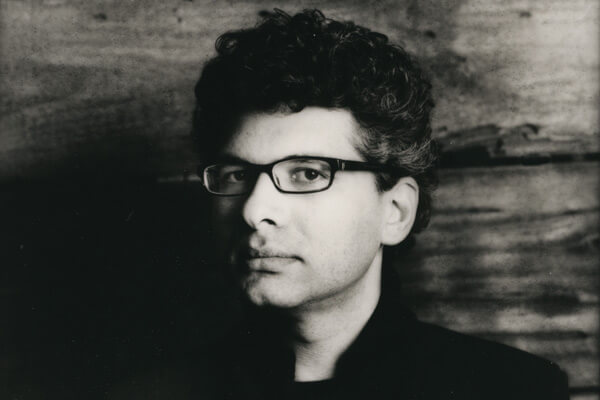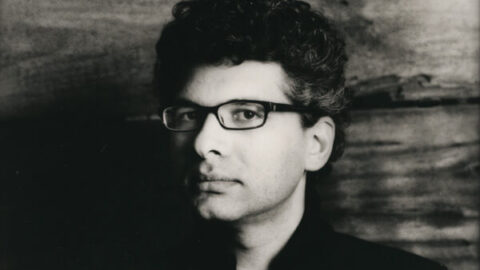Described by The New Yorker as “an arrestingly gifted young American composer,” and by the New York Times as “consistently stimulating,” award-winning composer, Keeril Makan creates enthralling and provocative music. Among his accolades are the Guggenheim Fellowship (2012) and The Luciano Berio Rome Prize, with commissions by Bang On A Can All-Stars, American Composers Orchestra, Harvard Musical Association, among others. His music is played throughout the United States and Europe. He is currently a Professor of Music at MIT.
Your music seems to have a core of chewy tonality to it and a dramatic use of repetition. Are these building blocks something you are acutely aware of when composing?
I kind of avoided pitch for awhile. Some of the repetition that emerged in earlier pieces came about almost as an avoidance of worrying about pitch. I tried to focus on other parameters, like form and rhythm. In particular, playing with expectation, kind of getting at how I was hearing continuity and what was necessary to keep a listener interested. Over time pitch became more of a building block for me and with one piece in particular, my string quartet, “Washed by Fire.”
The piece was for a dance company in San Francisco. We came up with this way of working–the choreographer and I–of wanting to explore material that would otherwise embarrass us: things that we liked but that we really wouldn’t admit liking. This led me to the melodic writing that I have been avoiding for a long time and modal writing in particular. Once I did that piece it really freaked me out to have the confidence in my ear for harmony and pitch. I now just let my ear guide me.

Do you write left to right–say, from the beginning over and over again–or do you just accumulate ideas, then piece them together?
Actually, no. There are usually two or three different pools of material. At a certain point I see the relationship among them. I develop separate ideas just assuming if I created them in the same point of time they are related in some way. Once I see those relationships is when the piece begins to come together.
Reading through your program notes it seems you have an omnivorous appetite of influences, including an undergraduate degree in religion. Can you speak to your guiding influences and is there a tie that binds your work together?
I don’t know if there is something that ties it together. I’ve been struggling with this a lot lately because I do have many interests. I think it’s healthy because it’s not forcing myself into one area of exploration. If anything there are different areas of interest that seem to accrue over time. It is not a linear progression, because there are things that come back, unexpectedly.
As to my religion degree, I still think my central focus is how our actions reflect our beliefs. Music is a fine example of this. The way the piece is structured, the material you use, what you hope to do with it, or how it plays in a social context is a reflection of what you believe in. Probably if there is one central thing, even more than the love of sound, it is the love of performance. I think that all my music is about the experience of hearing something. I think that is the thing that really fascinates me most. I don’t really consider the recording as the piece; you have to have them, but it is the performance that is most important.
A grand mystery in the world of institutionalized composition is pedagogy. How do you approach the pedagogy of composition?
I guess the most important thing I found over the years is curiosity. If a student is curious they have that drive that will help them teach themselves. A teacher is mostly just a therapist. The meetings you have with your teacher is mainly about keeping you on track. If there are warning signs of a student going way off the deep end (aesthetically) a teacher can help the student.
In my own teaching what I have found, including in the past few years, is that I now have the confidence that when looking at a score if something occurs to me then I should go ahead and say it. When I was younger I was more concerned with the impression that I was imposing my views rather than understanding students’ ideas. Really, there is no chance of me really screwing up a student. If I just give an honest reaction of what I’m seeing it is usually helpful. The things that I tend to concentrate on: notation and instrumentation. The main thing is to help the students clarify what they mean, and that such is reflected in the notation.
Why did you choose the film Persona as a subject for an opera? And where are you with the project?
I have been wanting to work on an opera for quite some time. I was developing a project for a while. I just couldn’t get people interested in it despite the really brilliant libretto. I finally just asked the director I was working with for other opera ideas. He suggested Bergman’s Persona. I watched it and saw the potential. So we got the rights to develop it in North America. With it being such a great film already, you have to reimagine it for the stage. The lighting and the camera work becomes the orchestration.
As to your second question: it is done. It took a couple years. I had the libretto and just started creating vocal parts, a piano accompaniment, and a little reading session so I could hear it. Then I had to rewrite everything, it was totally off. Once I rewrote it then I also orchestrated it. Because the harmonies came after the fact, I had the intention that the harmonies would become more distorted as it progresses. The opposite happens: it starts off slightly uncomfortable and rather sparse and gets fuller and more triadic. We end the opera differently than the movie does. The movie ends with the packing of the summer house. We end at the hospital with Elisabet saying,”nothing, nothing” during Alma’s consoling.
For more information, visit http://www.KeerilMakan.com.
























